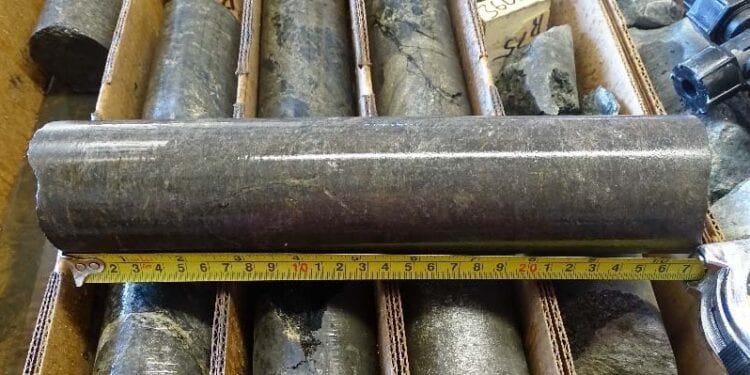First Six Holes Intersect Mineralisation
New World Resources Limited (ASX:NWC) continues to make good progress on multiple fronts with exploration and development activities at the high‐grade Antler Copper Deposit in Arizona, USA.
Managing Director/CEO, Mike Haynes, said that since drilling at the Project resumed in early June, a further six diamond holes have been completed. Massive sulphide mineralisation has been intersected in all six holes.
Significantly, a 5.5m thick interval of semi‐ and massive‐sulphides was intersected in the deepest hole the company has drilled to date, ANTRCDD202009, which is located approximately 200m down‐dip of the historical stopes.
Significant mineralisation has also been intersected in several shallow holes – providing further evidence of the strong potential to mine additional mineralisation in the upper levels, adjacent to historical stopes.
Mr Haynes said mineralisation remains open both along strike and at depth. The company is currently systematically drilling additional holes at deeper levels as part of its program to delineate Indicated Resources that can be used for mining studies.
Initial assay results from the current drilling program are expected in the coming weeks.
Based on evidence, A 400m long anomaly is interpreted to potentially represent the folded extension of the Antler Deposit. No drilling has ever been undertaken to specifically target this magnetic horizon.
Ground EM and IP surveying, together with magnetic modelling, is currently in progress to refine targets in advance of focused drill testing
Meanwhile, initial metallurgical testwork on a composite sample collected from the company’s first six drill holes is progressing well.
Separate primary rougher copper and zinc concentrates have already been produced. Assay results for this work is being interpreted in advance of further tests that are scheduled to be undertaken this week. Results and recommendations from this initial programme are expected before month end. These initial metallurgical studies will likely be complemented by testing additional samples recovered from the current drilling programme.












